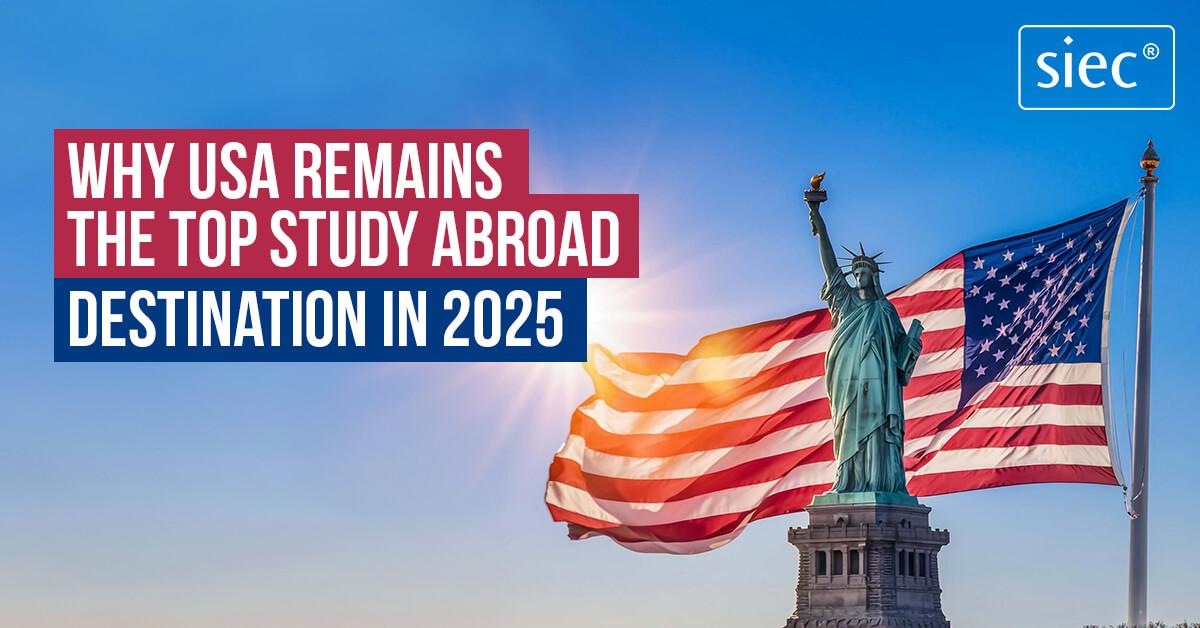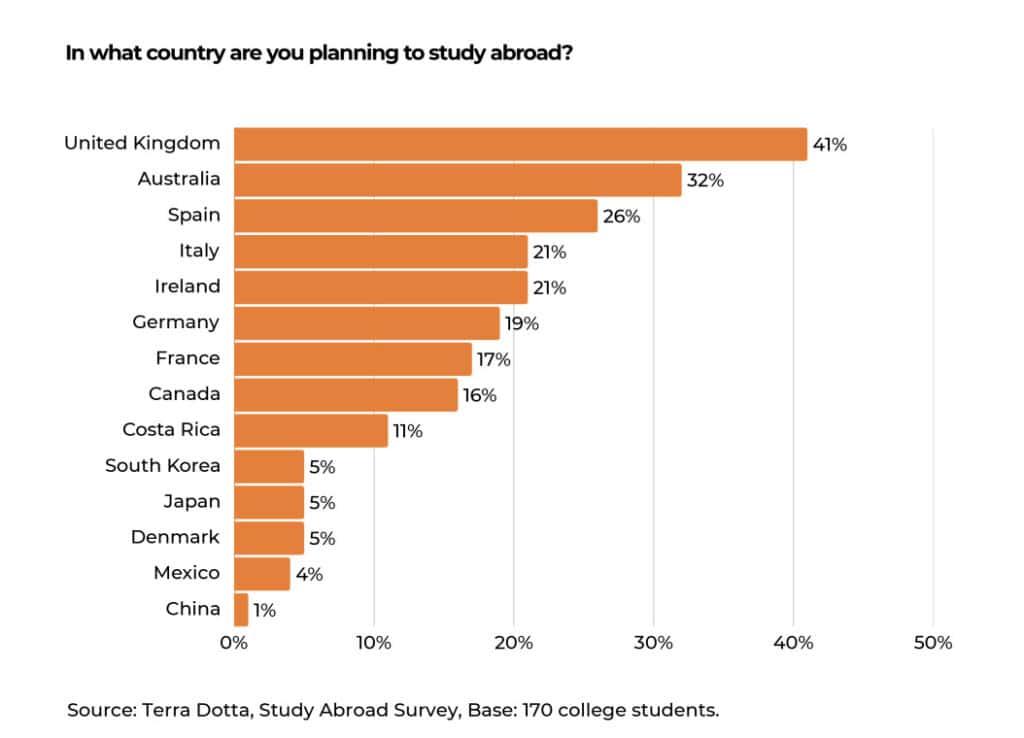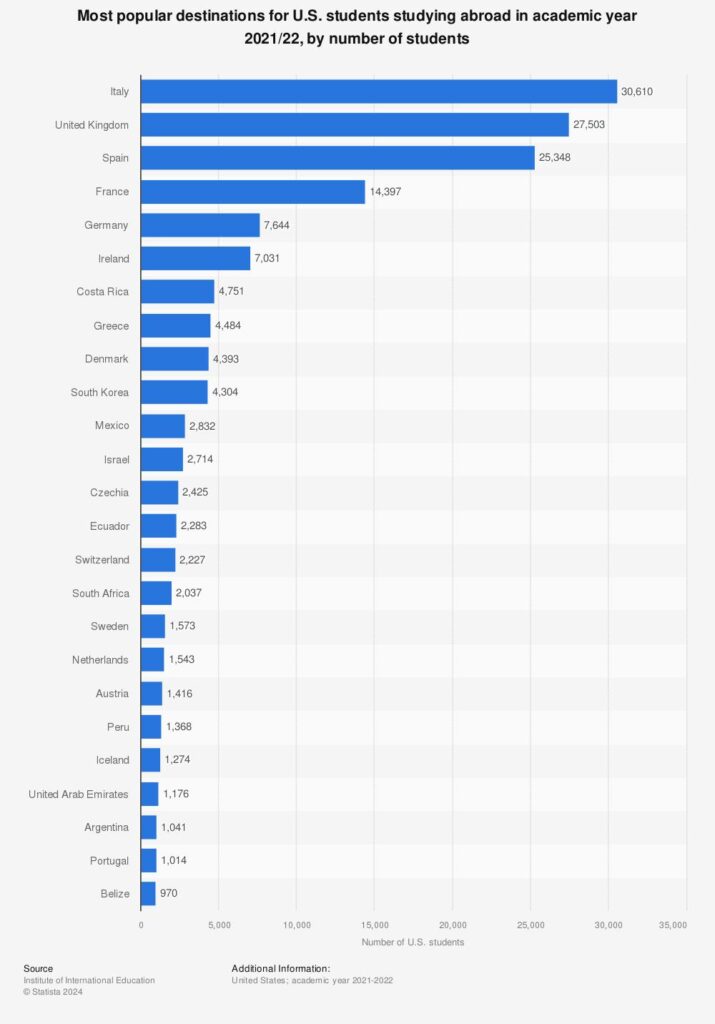As the world gradually reopens its doors and global connections deepen, the allure of studying abroad has never been stronger for U.S. students. Beyond the classroom, international education offers a tapestry of experiences-new cultures to explore, languages to master, and perspectives to broaden. With 2025 on the horizon, it’s time to look ahead and discover which destinations are poised to offer the most enriching and transformative opportunities for American scholars. Whether driven by academic excellence, cultural vibrancy, or career prospects, these top study abroad locations promise to shape the next generation of global citizens.
Table of Contents
- Emerging Global Hubs Offering Unique Academic Experiences
- Balancing Cost and Quality in Popular Study Destinations
- Cultural Immersion and Language Learning Opportunities Abroad
- Navigating Visa and Scholarship Options for U.S. Students
- Career Prospects and Networking Advantages After Studying Overseas
- Frequently Asked Questions
- Wrapping Up

Emerging Global Hubs Offering Unique Academic Experiences
Across the globe, a new wave of academic destinations is captivating U.S. students with their distinctive blend of culture, innovation, and educational rigor. These emerging hubs are not just places to study-they offer immersive experiences that challenge conventional learning and foster global perspectives. Picture yourself exploring the bustling streets of a tech-savvy city or engaging in hands-on research projects at a university nestled within a historic landscape.
Why choose these unconventional locations? Beyond world-class curricula, they prioritize interdisciplinary studies, encouraging students to merge fields like sustainability, digital arts, and entrepreneurship. Their campuses often serve as living laboratories, where theory meets real-world application. The smaller class sizes and close-knit academic communities mean personalized mentorship, creating an environment where creativity thrives.
- Dynamic local cultures that enrich daily life
- Access to emerging industries and startups
- Innovative programs tailored to future job markets
- Opportunities for language immersion and cultural exchange
| City | Unique Academic Strength | Notable Feature |
|---|---|---|
| Lisbon, Portugal | Marine Biology & Environmental Science | Coastal research labs & vibrant startup scene |
| Seoul, South Korea | Artificial Intelligence & Robotics | Cutting-edge tech campuses with global partnerships |
| Valletta, Malta | Digital Media & Game Design | Historic city meets modern creativity |
Balancing Cost and Quality in Popular Study Destinations
When considering popular study destinations, students often face the challenging task of weighing financial investment against academic and lifestyle quality. Countries like Canada and Germany have emerged as attractive options, offering a compelling blend of affordability and high educational standards. For instance, public universities in Germany charge minimal or no tuition fees, allowing students to allocate more resources to living expenses without compromising on quality.
On the other hand, destinations such as the United Kingdom and Australia provide world-renowned institutions but come with higher tuition and living costs. However, these countries often offer extensive scholarship programs and part-time work opportunities, which can help offset expenses. It’s essential to look beyond sticker prices and evaluate the value each destination delivers in terms of networking, research facilities, and post-graduation prospects.
Below is a quick comparison highlighting key factors to consider:
| Destination | Average Tuition | Living Costs | Scholarship Availability | Quality of Education |
|---|---|---|---|---|
| Germany | Low | Moderate | High | Excellent |
| Canada | Moderate | Moderate to High | Moderate | Very Good |
| United Kingdom | High | High | High | World-Class |
| Australia | High | High | Moderate | Very Good |
Ultimately, striking the right balance means prioritizing what matters most to you-whether it’s affordability, academic prestige, or cultural experience. By carefully comparing these elements, students can make informed decisions that maximize both educational value and financial sustainability.

Cultural Immersion and Language Learning Opportunities Abroad
Studying abroad offers more than just academic growth-it’s a gateway to fully embracing new cultures and mastering foreign languages. When you immerse yourself in daily life abroad, every interaction becomes a chance to sharpen your language skills beyond the classroom. Whether bargaining at a local market, joining a traditional festival, or sharing meals with host families, these authentic experiences bring language learning to life in ways textbooks never can.
Living the language means stepping outside your comfort zone and adapting to the rhythms of a different culture. This immersive approach accelerates fluency and builds confidence, transforming language from a subject into a living, breathing skill. Plus, engaging with native speakers lets you grasp slang, idioms, and cultural nuances that are often missed in formal study.
Many destinations also offer structured programs that combine academic coursework with cultural activities, such as cooking classes, dance workshops, and community service. These opportunities foster meaningful connections and deepen your understanding of the social fabric that shapes language and identity.
- Language exchange meetups – Practice conversational skills in a relaxed, social setting.
- Cultural homestays – Live with local families to experience daily customs firsthand.
- Local internships – Work alongside native speakers and gain professional language experience.
Navigating Visa and Scholarship Options for U.S. Students
Securing the right visa is a crucial step for U.S. students aiming to study abroad. While each country has its own application process, understanding key visa types such as student visas, exchange visitor visas, and work-study permits can simplify your journey. Many nations offer streamlined visa application processes for students enrolled in recognized programs, so it’s wise to research specific requirements early. Remember, timely submission and thorough documentation can significantly reduce processing delays.
Scholarships can dramatically ease the financial burden of studying overseas, and numerous organizations cater specifically to U.S. students. From government-sponsored grants to university-specific awards, exploring all available funding opportunities is essential. Don’t overlook private foundations and cultural exchange programs that provide scholarships based on merit, need, or field of study. Applying to multiple scholarships increases your chances, so keep your applications organized and tailored to each sponsor’s criteria.
Here is a quick overview of common visa types and scholarship sources to consider:
- Student Visas: Typically allow full-time study and limited work opportunities.
- Exchange Visitor Visas: Ideal for short-term academic or cultural exchange programs.
- Government Scholarships: Funded by home or host countries, often covering tuition and living expenses.
- University Scholarships: Awarded based on academic merit or specific talents.
- Private and Nonprofit Grants: Targeted at diverse fields or student demographics.
| Visa Type | Typical Duration | Work Rights |
|---|---|---|
| F-1 (Student Visa) | Duration of study + grace period | Limited (on-campus & CPT/OPT) |
| J-1 (Exchange Visitor) | Program length + 30 days | Allowed with sponsor approval |
| Tier 4 (UK Student Visa) | Program length + 4 months | Part-time during term, full-time breaks |

Career Prospects and Networking Advantages After Studying Overseas
Studying abroad opens doors to a world of professional opportunities that extend far beyond the classroom. Immersing yourself in a global environment cultivates adaptability, cross-cultural communication skills, and a broader worldview-traits highly prized by employers across industries. Many international programs also offer internships, cooperative education (co-op) placements, and hands-on projects that enhance your resume and provide valuable real-world experience.
Networking advantages are another invaluable asset gained through overseas education. Building relationships with professors, industry leaders, and peers from diverse backgrounds creates a unique global network. This interconnected web often leads to collaborative ventures, job referrals, and access to exclusive career resources that are otherwise unavailable in domestic settings.
Consider these key benefits:
- Global alumni networks that provide continuous support and mentorship.
- Access to international job markets where demand for multilingual and culturally fluent candidates is rising.
- Participation in global conferences and workshops that boost professional visibility.
| Benefit | Impact on Career |
|---|---|
| Multilingual Proficiency | Enhances employability in multinational corporations |
| Cultural Intelligence | Improves leadership and teamwork in diverse settings |
| Global Internship Experience | Builds practical skills and industry connections |
Frequently Asked Questions
Q&A: Top Study Abroad Destinations in 2025 for U.S. Students
Q1: Why should U.S. students consider studying abroad in 2025?
A1: Studying abroad in 2025 offers U.S. students an unparalleled opportunity to immerse themselves in new cultures, gain global perspectives, and enhance their academic and professional profiles. In an increasingly interconnected world, international experience can boost employability and personal growth.
Q2: Which countries are emerging as top study abroad destinations for U.S. students in 2025?
A2: While traditional favorites like the UK, Australia, and Canada remain popular, destinations such as Germany, South Korea, the Netherlands, and Spain are gaining traction for their quality education, cultural richness, and affordability.
Q3: What makes Germany a standout choice for American students?
A3: Germany offers tuition-free or low-cost education at many universities, especially in STEM fields. Combined with vibrant cities, strong industry ties, and a rich history, it presents a compelling option for students seeking both academic excellence and cultural adventure.
Q4: How is South Korea attracting more U.S. students in 2025?
A4: South Korea’s cutting-edge technology, dynamic pop culture, and expanding English-taught programs make it a magnet for students interested in innovation and modern Asian culture. Scholarships and internships further sweeten the deal.
Q5: What should students consider when choosing a study abroad destination in 2025?
A5: Important factors include language barriers, cost of living, academic offerings, cultural fit, and visa regulations. Students should also consider post-graduation opportunities and support services available for international students.
Q6: Are there new trends influencing study abroad choices in 2025?
A6: Yes, sustainability and digital learning are becoming influential. Many students seek destinations with strong environmental initiatives or hybrid study options, blending in-person and remote learning for flexibility.
Q7: How can students prepare for a successful study abroad experience in 2025?
A7: Preparation involves researching the destination thoroughly, securing scholarships early, understanding visa requirements, and developing cultural sensitivity. Being open-minded and proactive about challenges will also enrich the experience.
Q8: What role do universities play in facilitating study abroad programs in 2025?
A8: Universities increasingly offer tailored programs, partnerships with foreign institutions, and virtual exchange opportunities. They also provide resources like language training, orientation sessions, and mental health support to help students thrive abroad.
Q9: How is the global political climate affecting study abroad decisions for U.S. students?
A9: While some geopolitical tensions may cause caution, most top destinations maintain welcoming policies for international students. Staying informed about travel advisories and maintaining flexible plans is advisable.
Q10: In summary, what makes 2025 an exciting year for U.S. students considering studying abroad?
A10: With a blend of traditional excellence and emerging global hotspots, enhanced digital tools, and a growing emphasis on sustainability and cultural exchange, 2025 promises a rich and diverse landscape for U.S. students eager to broaden their horizons.
Wrapping Up
As the world continues to evolve, so do the opportunities for U.S. students eager to broaden their horizons through international study. Whether it’s the vibrant streets of Tokyo, the historic campuses of London, or the innovative hubs of Sydney, each destination offers a unique blend of culture, education, and adventure. Choosing the right study abroad location in 2025 means more than just picking a spot on the map-it’s about finding a place that challenges you, inspires growth, and enriches your perspective. So, as you plan your journey, remember that the best destination is the one that aligns with your passions and dreams, turning your study abroad experience into a life-changing chapter of your story.

